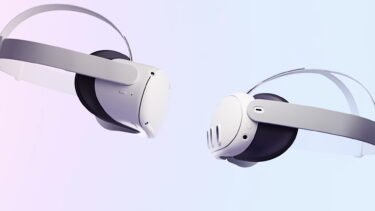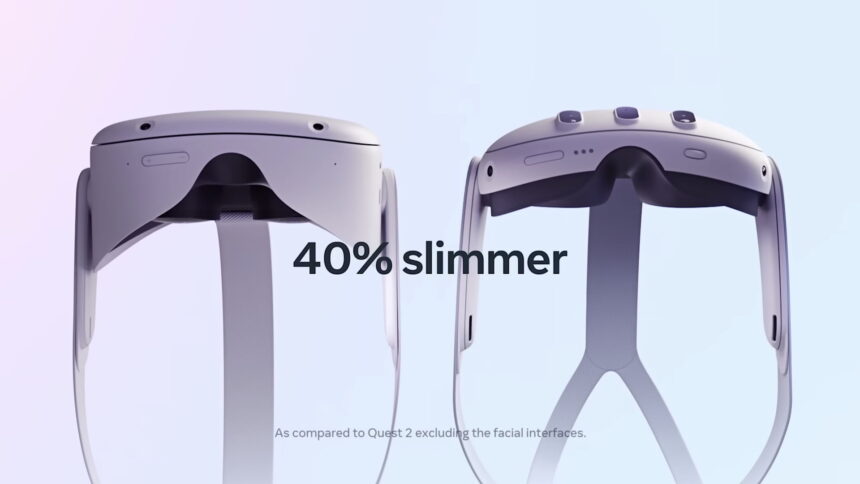Oculus founder proposes new metric for VR headset comfort

What metric should the VR industry use to give an idea of how comfortable a VR headset is? Palmer Luckey has a suggestion.
Meta Quest 3 will be released in a few weeks, and of course, the new headset is already being compared to its predecessor. This week on Twitter, VR enthusiasts were discussing the form factor and weight of the device.
The Quest 3 is significantly slimmer than the Quest 2 thanks to pancake lenses, but the weight won't change much. According to an anonymous developer, the new Quest headset weighs 509 grams. This is 6 grams more than the Quest 2. But the device still feels lighter (due to the thinner profile), wrote journalist Mark Gurman, who reportedly tried the Quest 3.

According to Meta, the Quest 3's enclosure is 40 percent slimmer than the Quest 2's, not counting the facial interfaces. | Image: Meta
If the two headsets weigh about the same but have different levels of comfort, it's clear that weight alone is not an objective measure of comfort.
Newton meters instead of grams
The Oculus founder jumped into the discussion with an unusual suggestion. "HMD should stop marketing weight in grams and start marketing neck torque in newton-meters," Luckey wrote on Twitter.
Since the Quest 3 protrudes less from the face than the Quest 2, the Newton meters should also be lower. This would make it easier on the neck and more comfortable, despite being almost the same weight. If the battery could be placed at the back of the head instead of in the front, the neck would be relieved even more (which would introduce other compromises in design).
HMDs should stop marketing weight in grams and start marketing neck torque in newton-meters. https://t.co/1X6vNuIAms
— Palmer Luckey (@PalmerLuckey) August 31, 2023
Of course, Luckey's proposed metric cannot capture all aspects of comfort: The head strap and facial interface may be uncomfortable to some people, depending on individual factors like head shape and personal preferences.
However, it would provide an objective benchmark that could have medical relevance. Especially since there are huge differences between VR headsets in terms of form factor and weight: from lightweight mini headsets like the Bigscreen Beyond (127 grams) to oversized monsters like the Pimax Crystal, which weighs more than 800 grams. The question is whether the average consumer understands what Newton meters are.
Far from the only point of contention
Comfort is not the only feature of VR headsets that is difficult to objectify and quantify. Even when it comes to visual quality, the industry is still struggling to find consistent and accurate metrics.
The resolution of a display is only one of several factors that affect visual quality, as headsets use lenses and their effect on image quality is large. That is why Meta suggested to measure sharpness as well.
In its proposal, Meta deliberately excluded field of view, avoiding one of the industry's biggest points of contention. In fact, there is still no industry-wide standard to measure the field of view of VR headsets. The values that headset manufacturers provide in their headset specifications should therefore be treated with a healthy dose of skepticism.
Note: Links to online stores in articles can be so-called affiliate links. If you buy through this link, MIXED receives a commission from the provider. For you the price does not change.